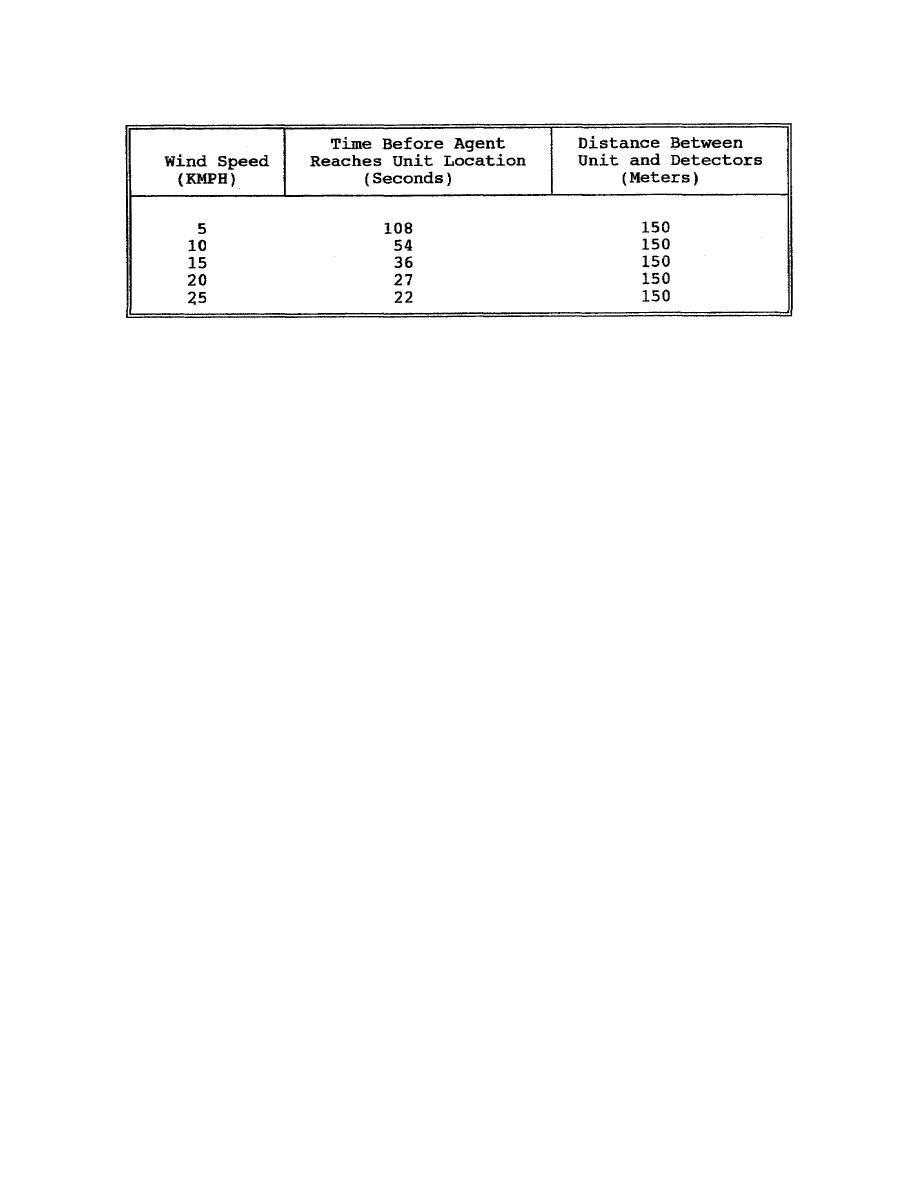
Table 3-1.
Wind Speed Effects on Chemical Agent Arrival Time
This method can be used only to warn against agents drifting into the
unit location.
On-target attacks circumvent detectors placed at this
maximum distance.
PART C - THE EFFECT OF TEMPERATURE ON A CHEMICAL AGENT CLOUD
AND AGENT PERSISTENCY
The stability of a chemical agent cloud is directly affected by the
temperature of the air at the surface and the first few meters above the
surface.
For this reason, conditions within this air layer have been
categorized into temperature gradients. The temperature gradient is an
expression of the difference in air temperature at two levels.
For
purposes of chemical operations, it is determined by subtracting the air
temperature measured about 1/2 meter above ground from the air
temperature about 4 meters above ground.
Vertical variations in
temperature affect air stability, which in turn affects the formation of
vertical air currents. The more stable the air layer in the target area,
the more effective a chemical attack will be. Under unstable conditions,
turbulence is great and many vertical air currents form, causing chemical
clouds to disperse quickly.
For calculation of chemical ammunition
requirements, temperature gradient forecasts are desirable in terms of
inversion; lapse, and neutral conditions. Temperature gradients can be
estimated in the event meteorological data is not available.
1.
Inversion Temperature Gradient.
An increase in air temperature with an increase in height is known as an
inversion (stable) condition. This condition usually exists on a clear
or partially clear night when the middle and low clouds cover less than
30% of the sky, and on early mornings until about 1 hour after sunrise,
when the wind speed is less than 5 knots.
It is characterized by a
minimum of convection currents and by maximum air stability -- ideal
conditions for the
3-7
CM7114


 Previous Page
Previous Page
